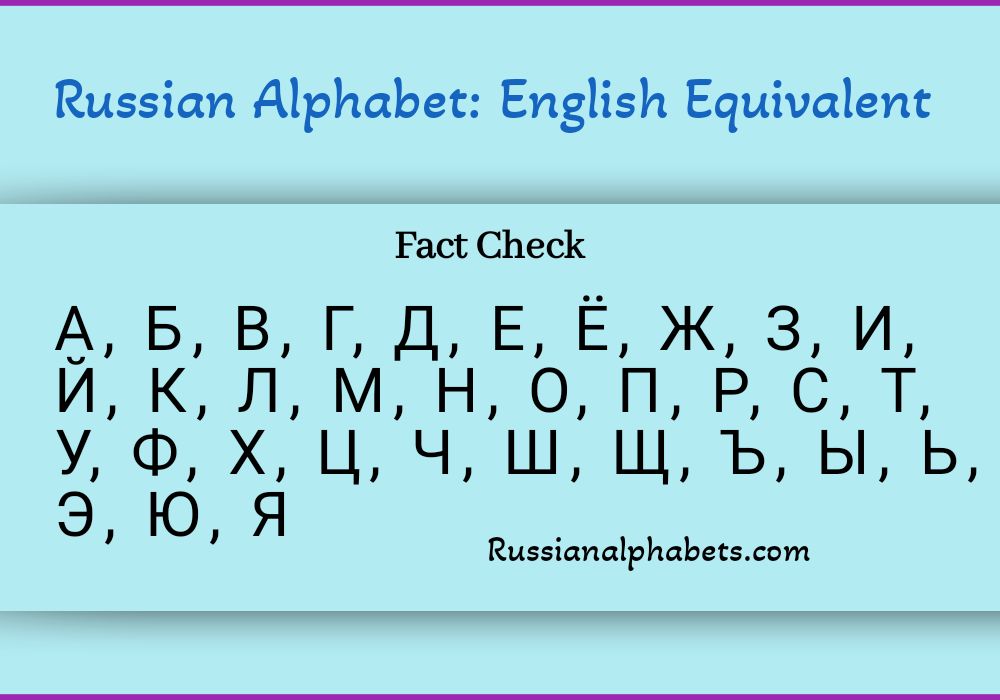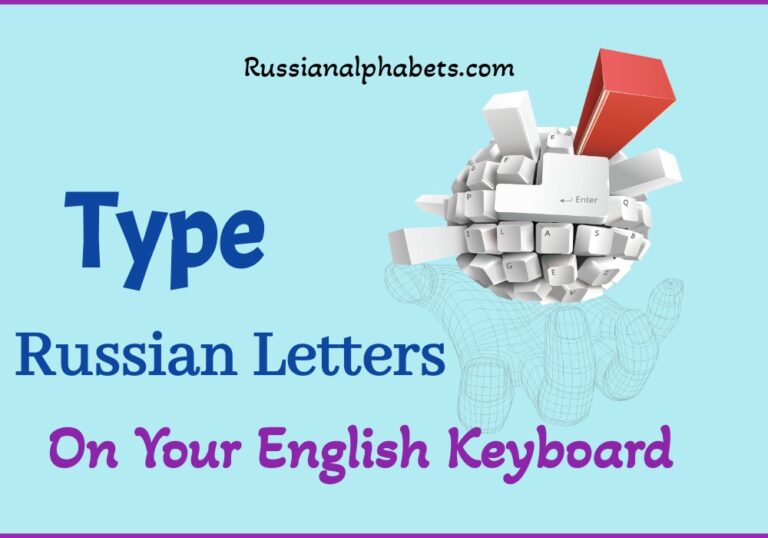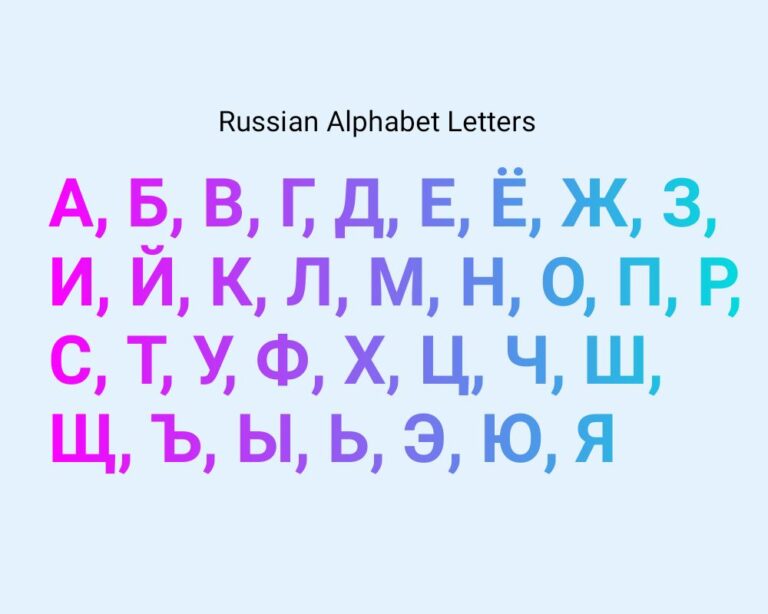Discover the Russian Cyrillic Alphabet Equivalents of English
For years, Russian language learners have grappled with the daunting task of mastering the Cyrillic alphabet. The unique combination of unfamiliar letters and mysterious sounds has left many feeling like they are deciphering an ancient code.
But fear not, for a breakthrough discovery has finally come to light – the long-awaited unveiling of the English equivalents for each letter in the Russian alphabet! This revelation promises to revolutionize language learning by providing a tangible bridge between two seemingly disparate worlds, offering hope and clarity to those who have long struggled with this linguistic challenge.
Grab your pencils and prepare to embark on a journey that will unravel the mysteries of the Russian written word like never before!
We provide in-depth insights and analysis to help you understand the complex relationship between the Russian alphabet and its English equivalent. With our deep understanding of the subject matter, you’ll easily grasp this crucial aspect of the language.
Russian is an East Slavic language spoken primarily in Russia, Belarus, Kazakhstan, and Kyrgyzstan. It is an official language in Russia, Belarus, Kazakhstan, and Kyrgyzstan and has minority status in many former Soviet states. The Russian alphabet consists of 33 letters: 21 consonants, 10 vowels, and two signs (hard and soft signs).
There are several ways to Romanize the Russian alphabet. One common method is using Latin characters closely resembling Cyrillic letter shapes.
How Similar is the Russian Alphabet to English?
The Russian alphabet is very similar to the English alphabet. There are only a few differences between the two alphabets. The most notable difference is that the Russian alphabet has 33 letters, while the English has 26 letters.
| Russian | Equivalent to English | Approx English Word | Translation |
| А | А | father | ah |
| Б | B | bad | beh |
| В | V | van | veh |
| Г | G | go | geh |
| Д | D | doc | deh |
| Е | ye | yes | yeh |
| Ё | yo | yorker | yo |
| Ж | Z | s in pleasure | zheh |
| З | Z | zoo | zeh |
| И | ee | see | ee |
| Й | I or y/j | boy or toy | kratkoyeh |
| К | K | kitten, catch. | kah |
| Л | L | lime | ehl |
| М | M | mat | ehm |
| Н | N | no | ehn |
| О | more | oh | |
| П | P | pot | peh |
| Р | R | Run | ehr |
| С | S | Sam | ehs |
| Т | T | Tap | teh |
| У | U | boot | oo |
| Ф | F | fat | ehf |
| Х | Kh, h | ch in Scottish loch / h in hello | khah |
| Ц | TS | bits | tseh |
| Ч | Ch | chip | cheh |
| Ш | Sh | shut | shah |
| Щ | Sh | sheep | schyah |
| Ъ | silent | – | tvyordiy znahk |
| Ы | I | ill | i |
| Ь | silent | – | myagkeey znahk |
| Э | E | pet | eh |
| Ю | YU | university | yoo |
| Я | YA | yard. | yah |
Not only is it the 8th most spoken language in the world, but it also has similarities to English. For example, the Cyrillic alphabet, used for Russian, has some letters that are the same shape as their English counterparts. A, B, D, K, L, M, O, and T all have the same shape in both languages.
In addition, several other letters are almost the same shape. While there are some differences between the two alphabets, they are quite similar overall. This makes Russian a relatively easy language for English speakers to learn.
However, these letters are all members of the Indo-European family of languages, so they share many similarities with English.
Are you struggling? Need help to learn the Russian alphabet? Check out these English equivalents!
If you need help to learn the Russian alphabet, don’t worry! There are plenty of English equivalents that can help you out. The first step is to learn the Cyrillic alphabet used in Russian.
Once you know the Cyrillic alphabet, you can start identifying the letters with similar shapes to their English counterparts. For example, the letter Г looks like the letter H, and the letter Ц looks like the letter C.
Learning the Cyrillic alphabet is a great first step, but it’s only half the battle. The next step is to learn how to pronounce the letters.
This can be tricky since some letters have different sounds in Russian than English. For example, the letter Д is pronounced “D,” while the letter Т is pronounced “T.
Master the Russian Language with Ease using these Handy English Alphabet Comparisons.
Mastering the Russian language may seem daunting, but it can be made easier by understanding the similarities between the English and Russian alphabets.
While there are some differences, such as adding characters for hard and soft consonants, the two alphabets share many common features. By acquainting yourself with these characteristics, you can initiate the process of mastering the Russian language effortlessly.
If you want to master Russian, these handy English alphabet comparisons will make the process much easier. Indeed, acquiring a new alphabet can be among the most formidable aspects of learning a new language.
But with these helpful comparisons, you’ll be reading and writing Russian like a pro in no time. Here’s a look at how the Russian alphabet stacks up against the English alphabet:
As you can see, the two alphabets have some key differences. But with a little practice, you’ll be able to read and write Russian with ease. So what are you waiting for? Start practicing today, and you’ll speak like a native in no time!
Quickly Learn the Russian Alphabet with These Simple English Translations
Are you interested in learning the Russian alphabet but feel intimidated by its strange-looking letters? Have no fear! You can quickly learn the alphabet with simple English translations with a little practice.
You can start reading and writing in Russian in just a few minutes. By learning the alphabet, you can pronounce Russian words correctly and read Russian signage when traveling. You will also be able to understand better the Cyrillic alphabet, which is used in many other Slavic languages.
So what are you waiting for? Get started today with these easy English translations of the Russian alphabet. Soon, you’ll be on your way to becoming fluent in Russian!
Confusion reigns when English speakers try to read the Russian alphabet.
Confusion reigns when English speakers try to read the Russian alphabet. The Cyrillic alphabet, used in Russia, looks different than the Latin alphabet used in English. This often leads to confusion and frustration for English speakers trying to read Russian.
There are 33 letters in the Cyrillic alphabet, as opposed to 26 in the Latin alphabet. This means that many more sound combinations are possible in Russian than in English. In addition, several letters have different sound values depending on where they are used in a word. As a result, it can be difficult for English speakers to know how to pronounce Russian words correctly.
The Cyrillic alphabet also has some letters that do not exist in the Latin alphabet. These include Ъ and Ы, which represent unique sounds not found in English.
Russian Alphabet: A New Way for English Speakers to Learn
They are no longer struggling to learn the Russian alphabet! A new method has been developed for English speakers, making learning the Russian alphabet simple and easy.
This new approach uses familiar English letters and sounds to teach the corresponding Russian letters and sounds, so memorizing a whole new set of symbols is unnecessary. In just a few short lessons, you will be on your way to reading and writing in Russian!
Learning the Russian alphabet is a great way to improve your language skills. Not only will it help you to understand spoken Russian better, but it will also give you a better understanding of written Russian. The Russian alphabet can be used to help you learn other languages as well.
How to get your kids to love practicing the Russian alphabet
- Start by teaching them the history of the Russian alphabet. The Cyrillic alphabet was formulated in the 9th century and is named after Saint Cyril, who significantly propagated Christianity across Eastern Europe.
- Explain to your kids that learning the Russian alphabet can be fun. There are 33 letters in the Cyrillic alphabet, each with a unique sound. You can help your kids learn by singing songs or playing games focusing on different letters.
- Finally, give your kids some incentive to practice their Russian alphabet skills. For example, you could offer a prize for every day they successfully practice for 20 minutes. With a little effort, your kids will be on their way to becoming experts in the Cyrillic alphabet!
Conclusion Points
The Russian alphabet has 33 letters. English has 26 letters. As you can see, there are eight more letters in the Russian alphabet than in English. These additional letters are АБВГДЕЗ, and they are pronounced like the letter “a” with a long “e” sound after it (similar to the pronunciation of “father”).
In conclusion, the Russian Alphabet English Equivalent, Finally Revealed! is a great resource for anyone looking to learn the Russian language.
With this resource, you can easily find the English equivalents for each letter in the Russian alphabet. This will help you better understand the pronunciation of Russian words and improve your fluency.
FAQs
If you’ve ever wondered what the Russian alphabet looks like or what the English equivalents are, wonder no more! Our new FAQ section has all the answers you’re looking for.
This comprehensive resource includes everything from basic questions about the alphabet to more complex queries about pronunciation and grammar. Whether you’re a beginner or an expert, you’ll find everything you need here.
Question (1) – Did you know the Russian alphabet differs from the English one?
Answer: The Russian alphabet has 33 letters, while the English alphabet has 26. The Russian alphabet, also known as the Cyrillic alphabet, was named after Saint Cyril, who invented it in the 9th century. Many languages other than Russian, including Ukrainian, Belarusian, and Bulgarian, use the Cyrillic alphabet.
Question (2) – How similar is the Russian and English alphabet?
Answer – To be specific, A, B,. D, K, L, M, O, T- all appear in both alphabets. Learning Russian will be easier if you’re already familiar with the English alphabet.
Both languages belong to the Indo-European family, though Russian is close to Slav languages, and English is a Romantic language.
Question (3) – What is the Russian alphabet compared to English?
Answer: The Russian alphabet also has different sounds for some letters. For example, the letter “a” is pronounced like the letter “a” in English, but the letter “b” is pronounced like the letter “v” in English. This can make it difficult for people unfamiliar with the Russian language to learn how to read and write.
K is pronounced like K in “kit,” never like K in “ski.” L is always pronounced like L in “lone” and never L in “pool”.
The letters A, B, D, K, L, M, O, and T have the same look and pronunciation in Russian and English.
Question (4) – Is there a difference between Russian and English ABCs?
Answer – Yes. Russian alphabets have more letters than English, and some are pronounced differently. For example, the letter “Ю” in Russian is pronounced “yuh,” while in English, it is pronounced “yew.” Additionally, some letters are combined to form new letters, and these combinations also produce different sounds.
Question (5) – How do you write ABC in Russian?
Answer: In the Russian alphabet, there are 33 letters, while in the English alphabet, there are only 26. The order of the Russian alphabet goes like this: А а, Б б, В в, Г г, Ґ ґ, Д д, Е е, Є є, Ж ж, ZH zh, Z z, Ии, ІіЇїЙйКкҚқҜҝ
ЛлMмNнOоPpQqRrSsTtUuVvWwXxYyYYyZz’. The extra letters in the Russian alphabet are “ы,” “э,” “ю,” and “я”.
Question (6) – Can Russian be written with English letters?
Answer: The short answer is that Russian can be written in English letters. However, there are a few things to remember when doing so. First, the Cyrillic alphabet has 33 letters, while the Latin alphabet has 26.
This means that some sounds will be represented by multiple letters. Second, the Cyrillic alphabet is phonetic, meaning each letter corresponds to a specific sound.
This is not the case with the Latin alphabet, so multiple letters or combinations of letters may represent some sounds.
Finally, Russian spelling is largely based on etymology, so words with the same root often look similar. For instance, the words for “sun” and “son” are spelled СОЛНЦЕ and СОН, respectively.
On our website, you’ll find deep and accurate information about the English equivalents of Russian letters.







